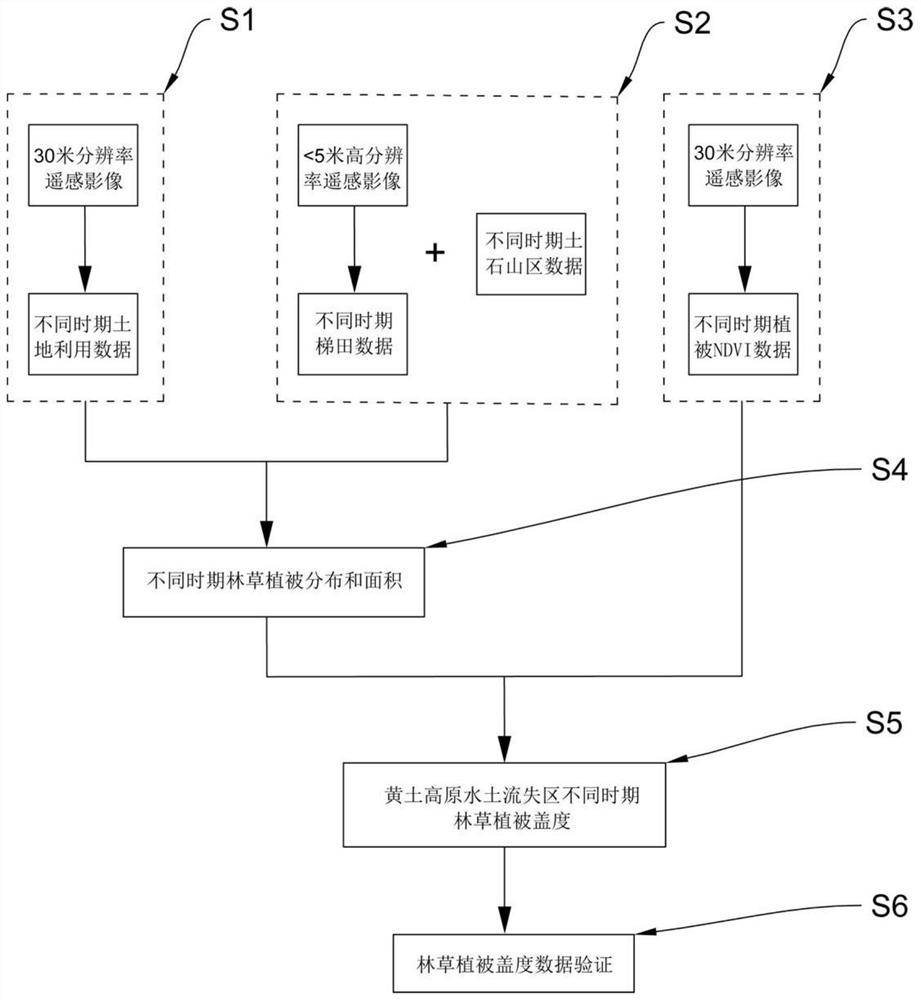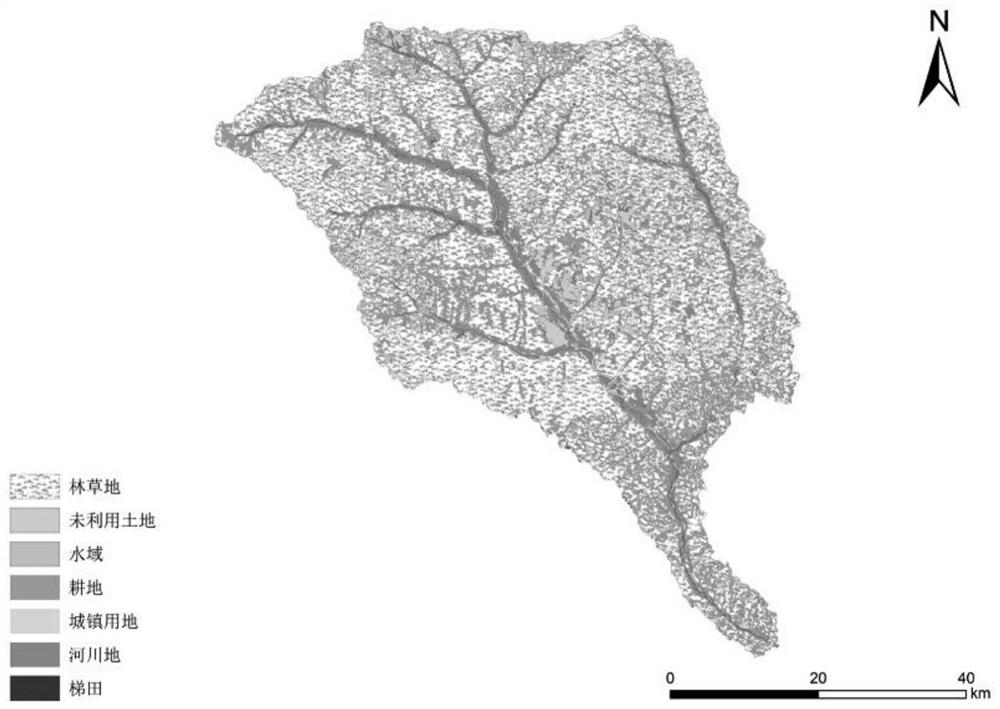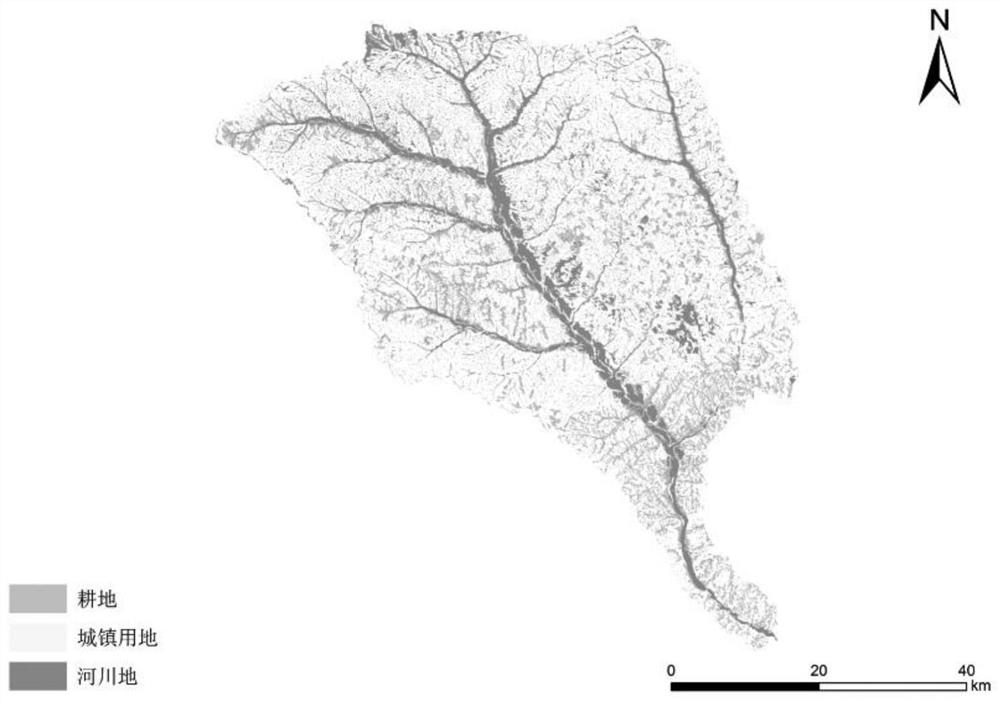A remote sensing-based method for extracting forest and grass vegetation information in soil and water loss areas of the Loess Plateau
A loess plateau, information extraction technology, applied in the field of environmental remote sensing, can solve the problems of extensive coverage classification, failure to obtain forest and grassland area information, and failure to eliminate crops, etc., to achieve the effect of avoiding duplication
- Summary
- Abstract
- Description
- Claims
- Application Information
AI Technical Summary
Problems solved by technology
Method used
Image
Examples
Embodiment Construction
[0059] The present invention will be described in further detail below in conjunction with the accompanying drawings and embodiments.
[0060] Table 1 is the main data source information table used in the embodiment. Embodiments Take the Tuwei River Basin, a typical watershed in the Loess Plateau, as an example, and there are no rocky mountains in this watershed.
[0061] Table 1 Information table of main data sources
[0062]
[0063]
[0064] Based on remote sensing image data in different periods, the information collection and processing of forest and grass vegetation in the Loess Plateau, the flow chart is as follows figure 1 shown, including:
[0065] S1: Extract the vector data of land use in different periods in the soil erosion area.
[0066] Specifically include:
[0067] S1.1: Download the 30-meter Landsat TM remote sensing data, use ENVI and ARCGIS as the platform, preprocess the satellite remote sensing data, and obtain the surface albedo data, including...
PUM
 Login to View More
Login to View More Abstract
Description
Claims
Application Information
 Login to View More
Login to View More - R&D
- Intellectual Property
- Life Sciences
- Materials
- Tech Scout
- Unparalleled Data Quality
- Higher Quality Content
- 60% Fewer Hallucinations
Browse by: Latest US Patents, China's latest patents, Technical Efficacy Thesaurus, Application Domain, Technology Topic, Popular Technical Reports.
© 2025 PatSnap. All rights reserved.Legal|Privacy policy|Modern Slavery Act Transparency Statement|Sitemap|About US| Contact US: help@patsnap.com



